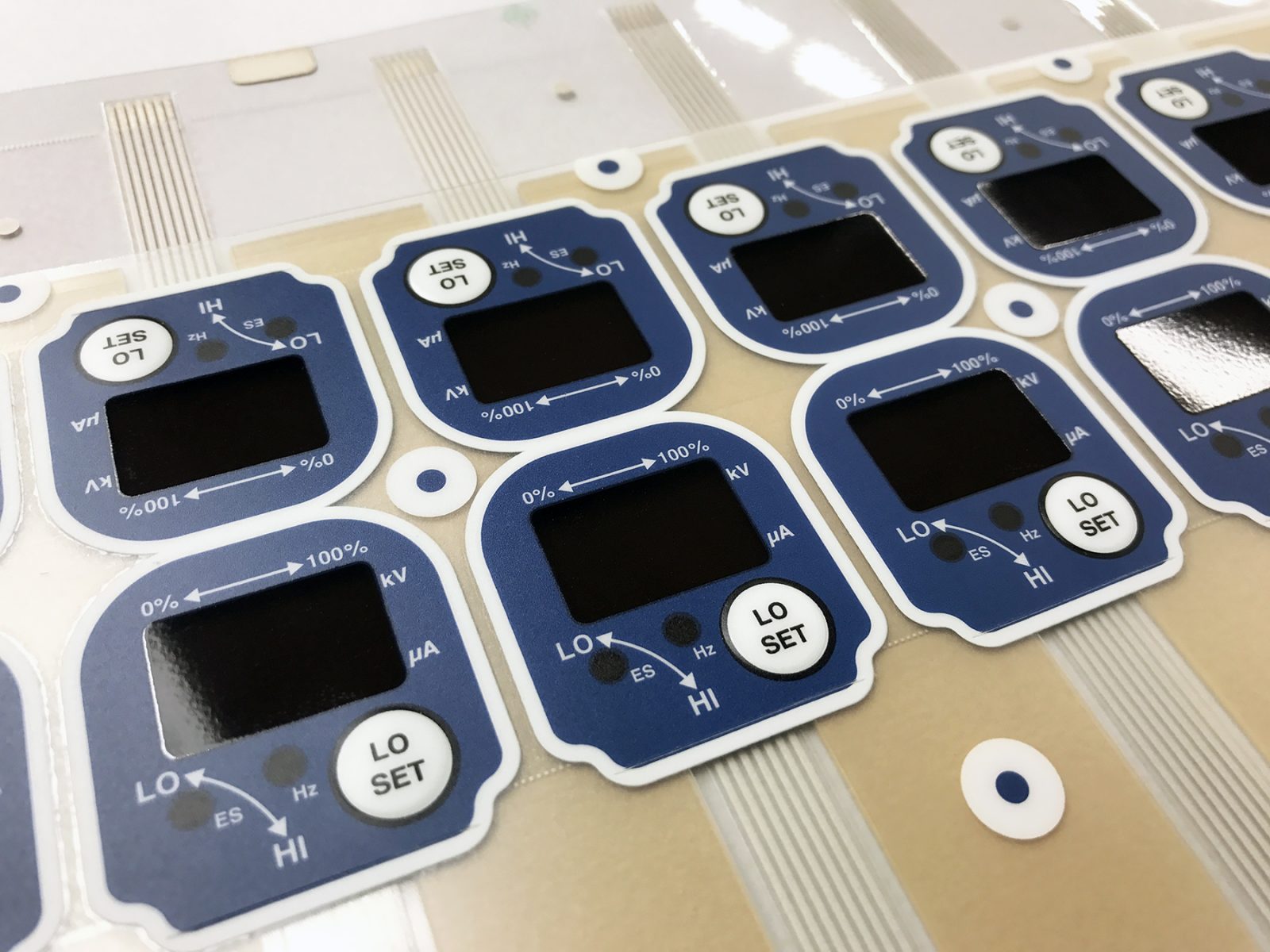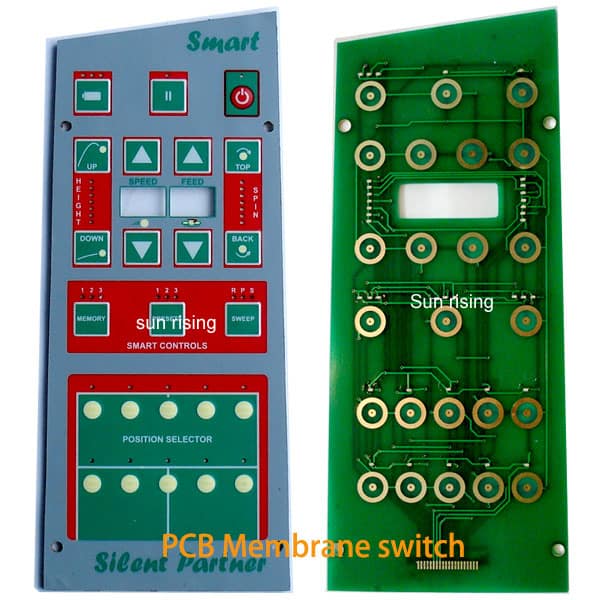Membrane Switches: A Affordable Solution for Contemporary Control Systems
Membrane Switches: A Affordable Solution for Contemporary Control Systems
Blog Article
Membrane Switch Modern Technology: The Secret to Trustworthy and Cost-Effective Interfaces
Membrane button innovation has actually arised as a critical part in the layout of customer interfaces, giving both integrity and cost-effectiveness across a diverse variety of applications. As we check out the complex benefits of membrane switches, their possibility for development raises questions concerning future applications and evolving trends.
Comprehending Membrane Change Technology
Membrane layer button innovation is a commonly made use of user interface service in different digital devices, providing a seamless mix of functionality and layout. This innovation integrates multiple layers of materials, typically being composed of a visuals overlay, spacer layer, and a circuit layer. The visuals overlay presents the user interface aspects, while the spacer layer separates the circuit layer from the overlay till an individual activates a button.
When stress is related to the overlay, the circuit layer completes the electrical circuit, sending out a signal to the device. This mechanism allows for different setups, consisting of tactile feedback and backlighting alternatives, boosting individual communication. Membrane switches are typically made utilizing sturdy products such as polyester or polycarbonate, guaranteeing long life and resistance to environmental elements like moisture and dust.
The convenience of membrane switches allows their application in varied industries, consisting of clinical gadgets, customer electronic devices, and industrial controls. Their portable style permits combination into space-constrained settings, supplying an efficient interface without jeopardizing visual charm. Understanding the details of membrane layer switch technology is necessary for manufacturers and developers looking for to develop trustworthy and efficient human-machine interfaces.
Trick Advantages of Membrane Layer Buttons
While numerous user interface remedies exist, membrane layer changes offer distinct advantages that make them a recommended option in countless applications. One of the key advantages is their durability; membrane layer switches are created to stand up to rough environmental conditions, including dampness, dust, and temperature fluctuations, ensuring resilient performance. This resilience substantially reduces the need for constant replacements, therefore decreasing general upkeep costs.

Furthermore, membrane buttons are lightweight and small, making them ideal for applications where room is limited. Their inconspicuous style adds to a smooth appearance without compromising performance.
Cost-effectiveness is likewise a remarkable benefit, as the manufacturing procedure for membrane changes has a tendency to be less pricey contrasted to conventional mechanical switches. This price, incorporated with their integrity and simplicity of installation, placements membrane layer switches over as a useful service for a variety of markets looking for efficient and effective interface.
Applications Throughout Different Industries
Just how do membrane layer buttons adapt to the varied needs of numerous sectors? Membrane switch technology is progressively identified for its versatility, making it appropriate for a large variety of applications across several fields.
In customer electronic devices, membrane buttons offer a compact solution for remotes and home appliances, boosting individual experience via intuitive layout. In addition, the commercial industry leverages membrane layer switches for equipment control panels, taking advantage of their resistance to harsh settings, such as dampness and dust.
Army and aerospace applications additionally utilize membrane layer buttons for their integrity and ability to endure extreme problems, making certain functional effectiveness in essential situations. In addition, the food and drink market adopts these switches for automated systems, where cleanliness and simplicity of operation are vital. Eventually, membrane layer buttons are tailored to meet the one-of-a-kind needs of each sector, confirming their crucial role in contemporary technology interfaces
Style and Customization Alternatives

In the realm of membrane layer button innovation, style and personalization choices play an essential role in enhancing capability and individual communication. These buttons can be tailored to meet specific operational demands and visual preferences, making them flexible components in numerous applications.
Among the primary modification choices is the design of the button itself, which can be created to fit unique interface and ergonomic considerations. By readjusting the shape, dimension, and plan of buttons, producers can produce user-friendly designs that help with simplicity of usage. In addition, the consolidation of various shades and graphic overlays permits branding and improved visibility, guaranteeing that users can swiftly identify functions.
Furthermore, membrane layer buttons can Check Out Your URL be crafted with numerous responsive responses systems, such as raised buttons or distinct clicks, to enhance the individual experience. Different products can also be chosen for durability and environmental resistance, resolving factors such Bonuses as dampness, temperature fluctuations, and chemical direct exposure.
Eventually, the comprehensive layout and personalization options readily available in membrane layer switch innovation equip organizations to produce customized services that not only meet useful needs but additionally line up with their branding and operational demands.

Future Trends in Membrane Layer Switches
As membrane button modern technology remains to advance, future patterns are significantly concentrated on enhancing customer experience and incorporating sophisticated performances. One substantial fad is the integration of touch-sensitive and capacitive modern technologies into typical membrane buttons. This development permits for more intuitive user interfaces, providing responsive feedback while preserving a smooth design.
One more arising pattern is the usage of eco-friendly products, driven by the growing demand for lasting production methods. Producers are seeking to reduce their carbon impact by utilizing recyclable substratums and low-impact inks, aligning with worldwide sustainability goals.
Furthermore, the rise of the Web of Points (IoT) is prompting the unification of clever attributes into membrane layer buttons. Boosted connection options will make it possible for devices to connect with each various other, permitting for smooth combination into wider systems.
Additionally, innovations in printing innovations, such as electronic printing, are enabling better layout adaptability and customization. This enables producers to generate elaborate designs and vibrant shades cost-effectively.

Conclusion
In final thought, membrane layer switch technology represents a crucial technology see here now in interface layout, supplying substantial advantages in longevity, personalization, and cost-effectiveness. Its widespread applicability throughout diverse markets underscores its value in modern innovation. As developments remain to arise, particularly in touch-sensitive user interfaces and sustainable materials, the possibility for membrane layer switches over to boost customer experience and functionality continues to be appealing. Continued exploration of this innovation will likely produce better renovations and widen its scope in future applications.
Report this page